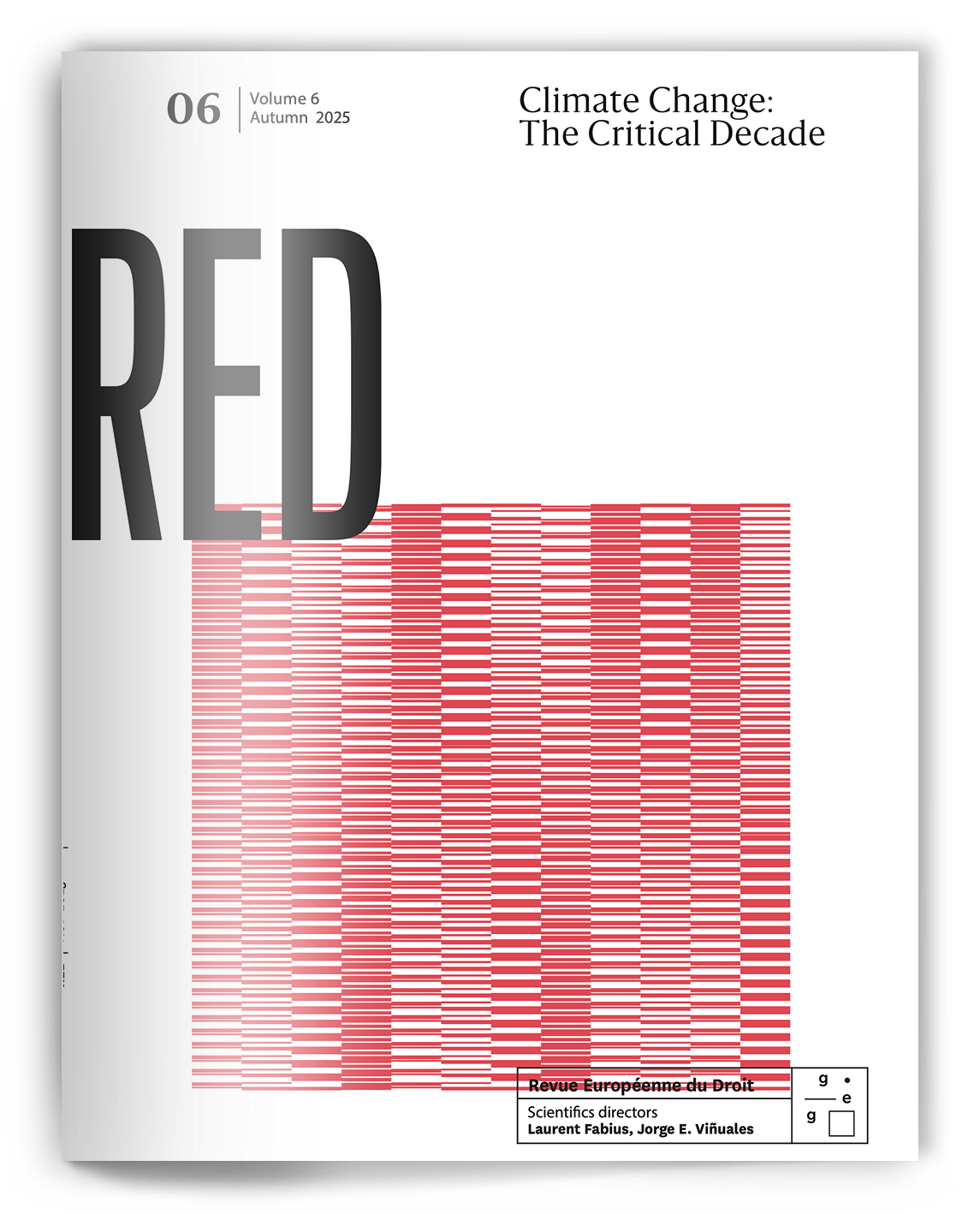The role of scientists in the fight against climate change

Jim Skea
Chair, IPCC (GIEC)Issue
Issue #6Auteurs
Jim Skea
A Scientific Journal published by Groupe d'études géopolitiques
Climate Change: The Critical Decade
Scarcely a single intervention at meetings of the UN Framework Convention on Climate Change (UNFCCC) omits a reference to the role of science in informing and guiding climate action. These are not just ritual tippings of the hat. The work of the scientific community has been and will continue to be foundational in diagnosing the health of the planet and providing the evidence base for human responses.
The scientific ecosystem concerned with climate change is large and complex. The Web of Science database holds records on around 60,000 articles relating to climate change and global warming in 2024 alone. 5,000 articles per month and growing at around 10% per year. These articles, spread across all disciplines, cover human aspects of climate change and climate responses as well as the natural sciences. A rapidly growing proportion of these articles, now over a third, originates in developing countries led by China and India.
And the scientists who produce these articles are located in a range of institutional settings: universities of course, but also independent research institutes as well as government laboratories and offices. NGOs and business also contribute to the literature. Not all articles have equal impact of course. Science advances by filling in knowledge gaps and challenging conventional wisdom. Articles that report new, or alarming, findings will receive more citations and attract wider public attention. And scientists are also people with lives outside the laboratory and the lecture theatre. Many have acted as eloquent advocates for climate action.
Every individual scientific paper matters, but it is only when individual papers are placed in the context of the overall body of evolving knowledge that the picture becomes clearer. The Intergovernmental Panel on Climate Change (IPCC) was established to assess the overall body of knowledge, establish the level of confidence in key findings, draw out different perspectives and strands of thinking, and identify knowledge gaps. The IPCC also acts as a bridge between scientists and the policy world. It is a trusted body that forges consensus between representatives of the scientific world and policymakers, a prerequisite for informed and effective policy-making.
So, what specifically does science contribute to climate action and our understanding of climate change? Going back to basics, observation of the earth system – the atmosphere, the oceans and the biosphere – is foundational. Terrestrial observations of climate variables, such as temperature and precipitation, are supplemented by balloons, aircraft, ships and buoys. Remote satellite sensing is now an essential part of the armoury. This requires a formidable research infrastructure, and it does not come cheap. The challenge of curating and analysing the vast amounts of data created must not be under-estimated.
Monitoring of human systems is also essential to assess climate impacts and opportunities for climate action. Statistical agencies collect essential data on demographics, economic activity and settlement patterns. They also collect data on the activities that give rise to greenhouse gas emissions, such as burning fossil fuels, which then need additional scientific information on “emissions factors” estimating, for example, how many tonnes of carbon dioxide are emitted for every tonne of coal burned.
We should not forget the importance of basic theory. In the 19th century, scientists such as Arrhenius and Tyndall deduced the likely consequences of adding carbon dioxide to the atmosphere, arguing from basic physical and chemical principles. Their broad brush conclusions still stand up today.
Having relevant data is the start. Scientists then need to make sense of it. The IPCC has concluded that “human activities, principally through emissions of greenhouse gases, have unequivocally caused global warming”, but that does not mean that scientists have completed their work. Progress still needs to be made in terms of understanding processes relating to the atmosphere, including circulation and clouds, the water cycle, the cryosphere and the oceans, and the biosphere. There is a need for a better understanding of changes in sinks and sources of greenhouse gases and Earth system feedbacks. Improved understanding is needed, especially at the regional and local levels, where the impacts on human and natural systems are experienced.
It is becoming increasingly possible to attribute specific climate and weather events to human activities. For example, the IPCC Sixth Assessment Report concluded that there is a high level of confidence that human activities have caused observable increases in hot extremes and that it is likely that human activities have been the main driver of the intensification of heavy precipitation. However, there is lower confidence regarding human influence on agricultural and ecological drought, partly as a result of a lower level of agreement in the assessed scientific studies. The attribution of losses and damage associated with the events is becoming more salient due to progress in dealing with losses and damage under the Paris Agreement. Climate scientists are working to fill these knowledge gaps.
Understanding how the world works now is just one part of the picture. We also need to understand where we are headed, contingent on the actions that we are prepared, or are not prepared, to take. That is where the construction of scenarios and modelling comes into play.
Working from a range of assumptions about social and economic developments that touch on demographic change, patterns of economic development, and technology deployment, social scientists and economists can project greenhouse gas emissions using global integrated assessment models as well as national and sectoral models. These results can be used to drive earth system models which project consequences for the climate system. Those studying climate impacts can then investigate the consequences for human and natural ecosystems. Such modelling efforts are delivering increasing levels of geographical detail that can support infrastructure and adaptation planning at the local level.
Modelling efforts across all these domains are being coordinated through “modelling intercomparison projects” which allow different models to be deployed using similar assumptions, thus exploring the degree of certainty in terms of climate outcomes. As a result, a variety of futures can be explored, ranging from those in which continued use of fossil fuels leads to increasing levels of emissions, through to those where global warming is limited to 1.5ºC in the long-term. The IPCC has developed a systematic approach to communicating the degree of certainty in scientific findings by assessing the level of evidence and the degree of agreement in underlying scientific literature.
Different emissions futures depend on assumptions about the actions that governments, business and society choose to take. Engineers, land use experts, economists and social scientists can study the technologies and response options available to reduce greenhouse gas emissions and adapt to climate change. They can identify the conditions that enable these options to be exercised, including research and technology development, institutional frameworks, policy packages, economic incentives and finance. Lessons can be learned from the success of existing policies. Such work provides practical guidance to decision makers in government and elsewhere.
Although huge amounts of progress have been made in the last few decades, much remains to be done, and new challenges are emerging. Interest has been growing in potential tipping points in the climate system, defined by the IPCC as “a critical threshold beyond which a system re-organises, often abruptly”. While tipping points may have a low probability of occurring, the scale of the consequences for natural and human systems merit scientific attention. Examples include collapse of the Greenland or West Antarctic ice sheets, collapse of the Atlantic meridional overturning circulation (“the Gulf Stream”), melting of permafrost in Northern latitudes, dieback of low-latitude coral reefs and dieback of Amazonian rainforests.
As it appears ever more likely that global warming will exceed 1.5ºC within the next few years, there are major knowledge gaps associated with managing temperature “overshoot” by removing carbon dioxide from the atmosphere and bringing warming levels down in line with the Paris Agreement long-term temperature goal. In bio-geophysical terms, how will the Earth system respond to reduced carbon dioxide concentrations and consequent cooling? How reversible are climate change impacts? Is it feasible to deploy at scale novel carbon dioxide removal techniques? And what would be the wider social and economic consequences of their deployment?
And finally, there is a need for better understanding of the distributional consequences of climate responses, both adaptation and mitigation, and the implications for sustainable development and equity. These, and other issues have been scoped into the outlines of the next IPCC reports and will exercise the scientific community over the next few years.
The fight against climate change, and the effort to cope with climate change that is inevitable as a result of past and current human activities, has scarcely started. Science has already contributed much to understanding the nature of the crisis in which we find ourselves. Scientists stand ready to continue to communicate their existing findings and fill in knowledge gaps to support practical action at all levels.
citer l'article
Jim Skea, The role of scientists in the fight against climate change , Nov 2025,
à lire dans cette issue
voir toute la revue





